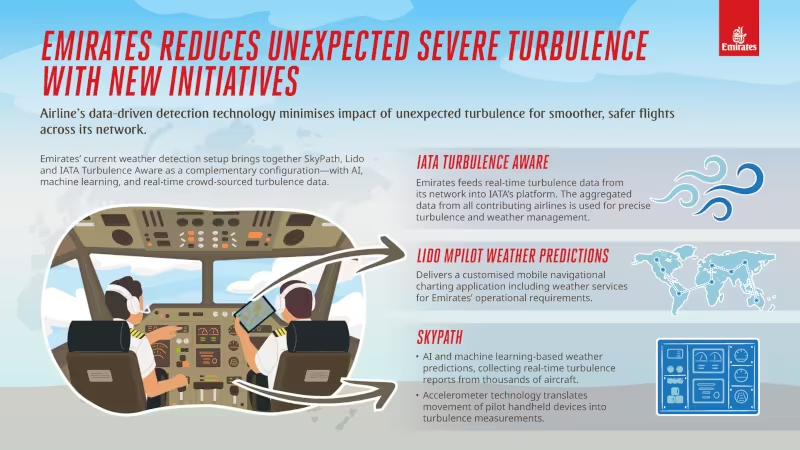
Emirates reduces unexpected severe turbulence with new initiatives
Emirates has introduced a series of innovative initiatives aimed at reducing unexpected severe turbulence and enhancing passenger comfort and safety across its global network. Here's a breakdown of what the airline is doing: Multi-Layered Turbulence Prediction Strategy Emirates is leveraging multiple real-time data sources and AI-powered tools to improve turbulence forecasting: - SkyPath: Uses AI and machine learning to analyze real-time turbulence data from thousands of aircraft. It even utilizes iPad accelerometers to detect turbulence that traditional systems might miss. - Lido mPilot (Lufthansa Systems): Provides pilots with high-accuracy weather charts, live cloud and convection data, and turbulence/icing predictions. - IATA Turbulence Aware: Emirates contributes to and benefits from this global platform, which aggregates real-time turbulence data from airlines worldwide. AI + Real-Time Data = Smarter Flights By integrating these tools into pilots’ electronic flight bags, Emirates enables crews to: - Visualize turbulence zones in real time - Make informed route adjustments - Improve fuel efficiency and passenger comfort Results So Far - Emirates reports a significant reduction in unexpected severe turbulence incidents over the past year. - The airline emphasizes that while turbulence can’t be eliminated, these technologies help minimize its impact. Leadership Insight Captain Hassan Alhammadi, Divisional SVP of Flight Operations, noted that Emirates is committed to working with partners who share their vision of using advanced technologies and AI to enhance flight safety and comfort. This proactive approach positions Emirates as a leader in tackling one of aviation’s growing meteorological challenges.
